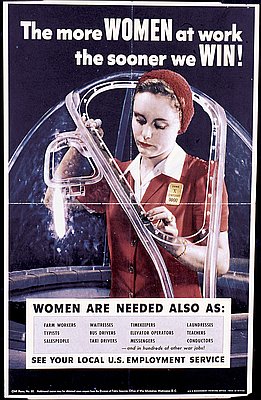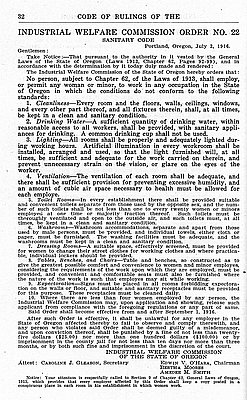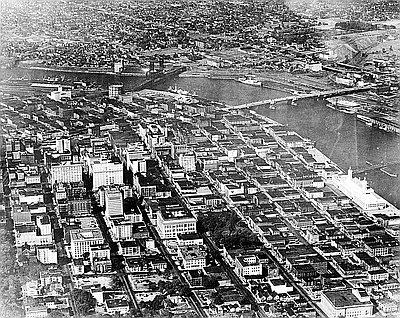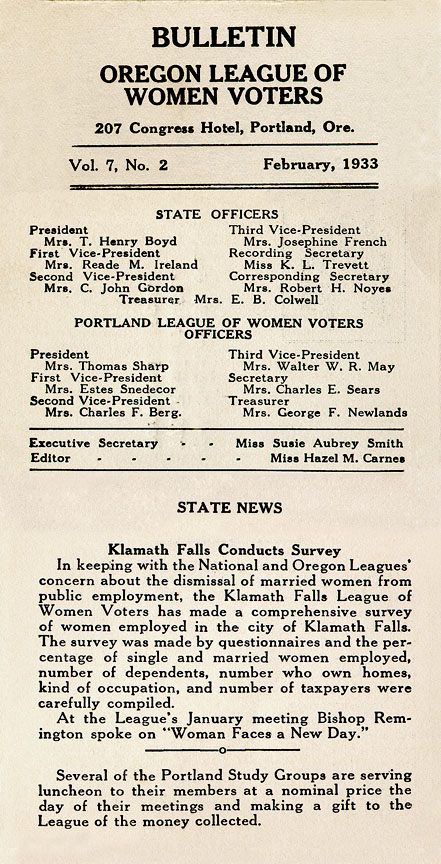- Catalog No. —
- OLWVB Vol.7, No. 2, February 1933
- Date —
- February 1933
- Era —
- 1921-1949 (Great Depression and World War II)
- Themes —
- Government, Law, and Politics, Women
- Credits —
- Oregon Historical Society
- Regions —
- Southwest
- Author —
- Oregon League of Women Voters' Bulletin
Oregon League of Women Voters Bulletin
This 1933 article in the Oregon League of Women Voters Bulletin refers to a survey of working women conducted by the League’s Klamath Falls branch. The article does not provide details of the survey results. This document has been edited to highlight the selected article.
In 1932, the government began to fire married women from federal jobs after a clause was written into a Congressional bill dictating that during staff reductions, married women—whose husbands also worked for the government—would be the first employees to be let go. The national and local branches of the League of Women Voters (LWV) opposed the clause and discrimination against married women in the workforce. The clause was repealed in 1937.
During the Depression, many people believed that married women should only be allowed to work in cases of dire financial need. At a time when unemployment was high, some men and women argued that the employment of married women would result in neglected children and the downfall of the American family. Supporters of the rights of married and unmarried women to work argued that employment provided women with economic independence and a way to contribute to society.
The 1930 U.S. Census reported that almost 30,000 married women were employed in Oregon, about twice the number reported in 1920.
Written by Kathy Tucker, © Oregon Historical Society, 2002.
Related Historical Records
-
The More Women at Work
This poster was issued by the Office of War Information after the United States’ entry into World War II had drained much of the available male labor supply …

-
Industrial Welfare Commission Order No. 22
This order by the Oregon Industrial Welfare Commission established a sanitary code for workplaces with female employees. The order regulated lighting, ventilation, bathroom and changing room access, and …

-
Portland's Laboring Class
As a frontier city, Portland had always had many more adult men than women. The young men were usually unmarried and accustomed to moving from rural to urban …

